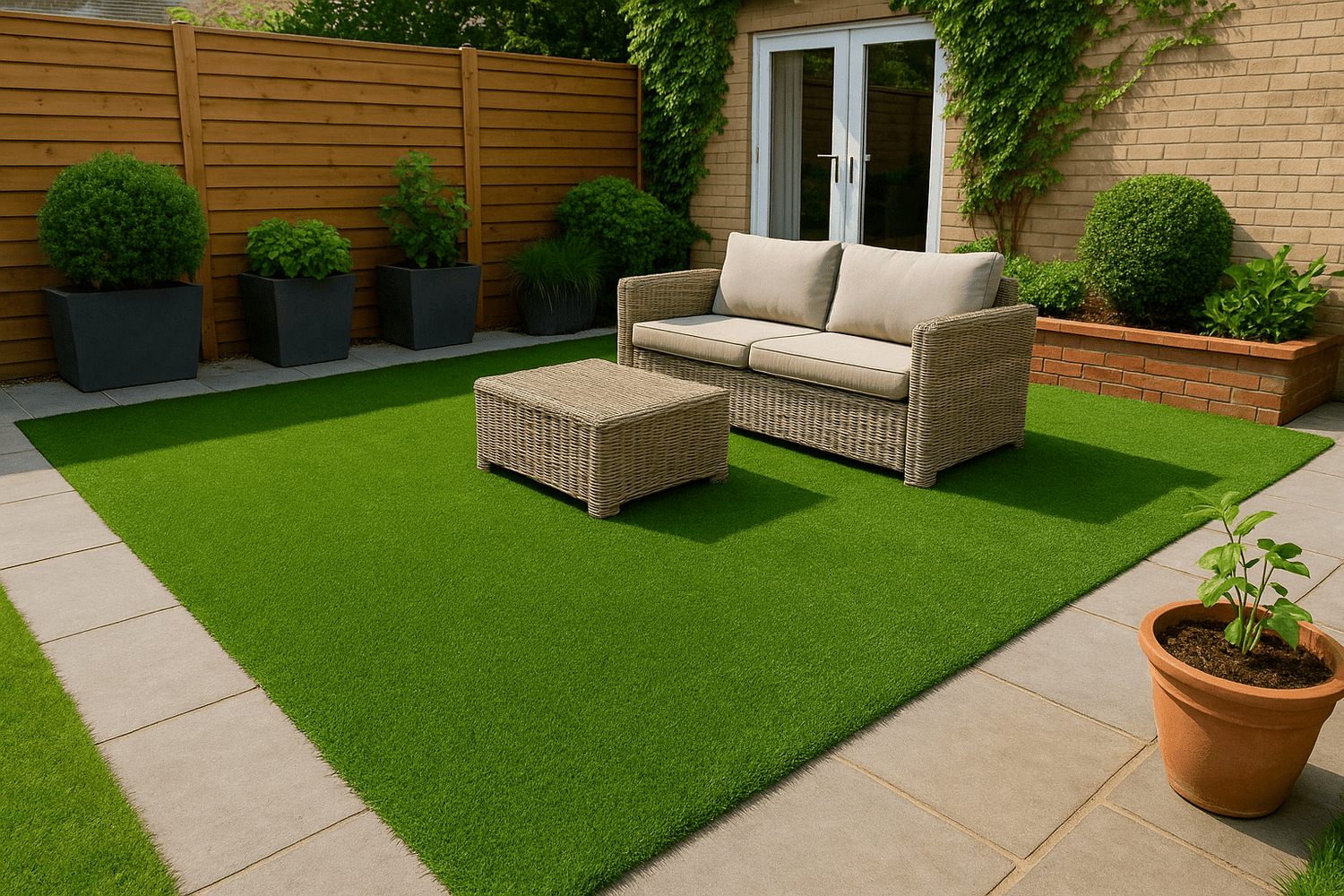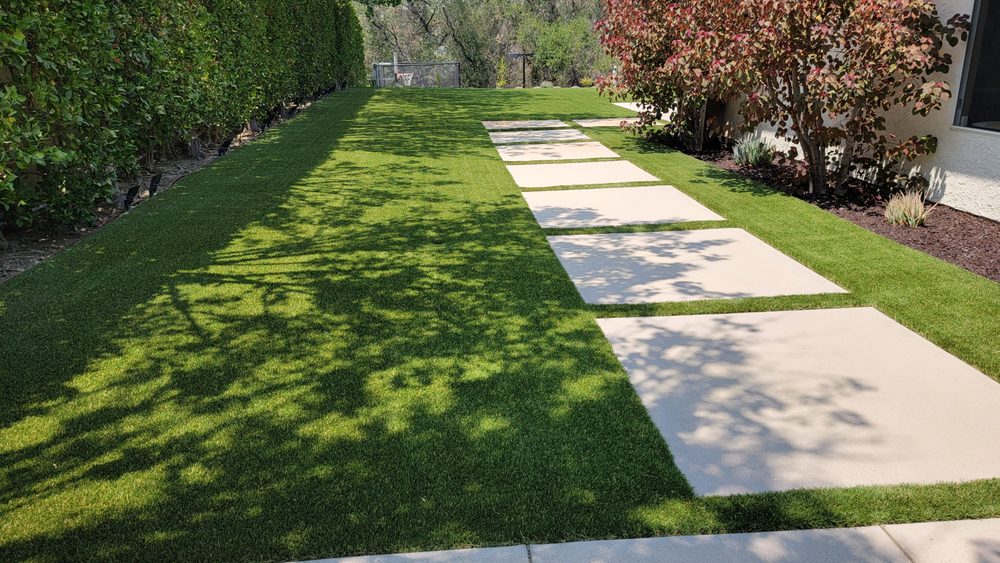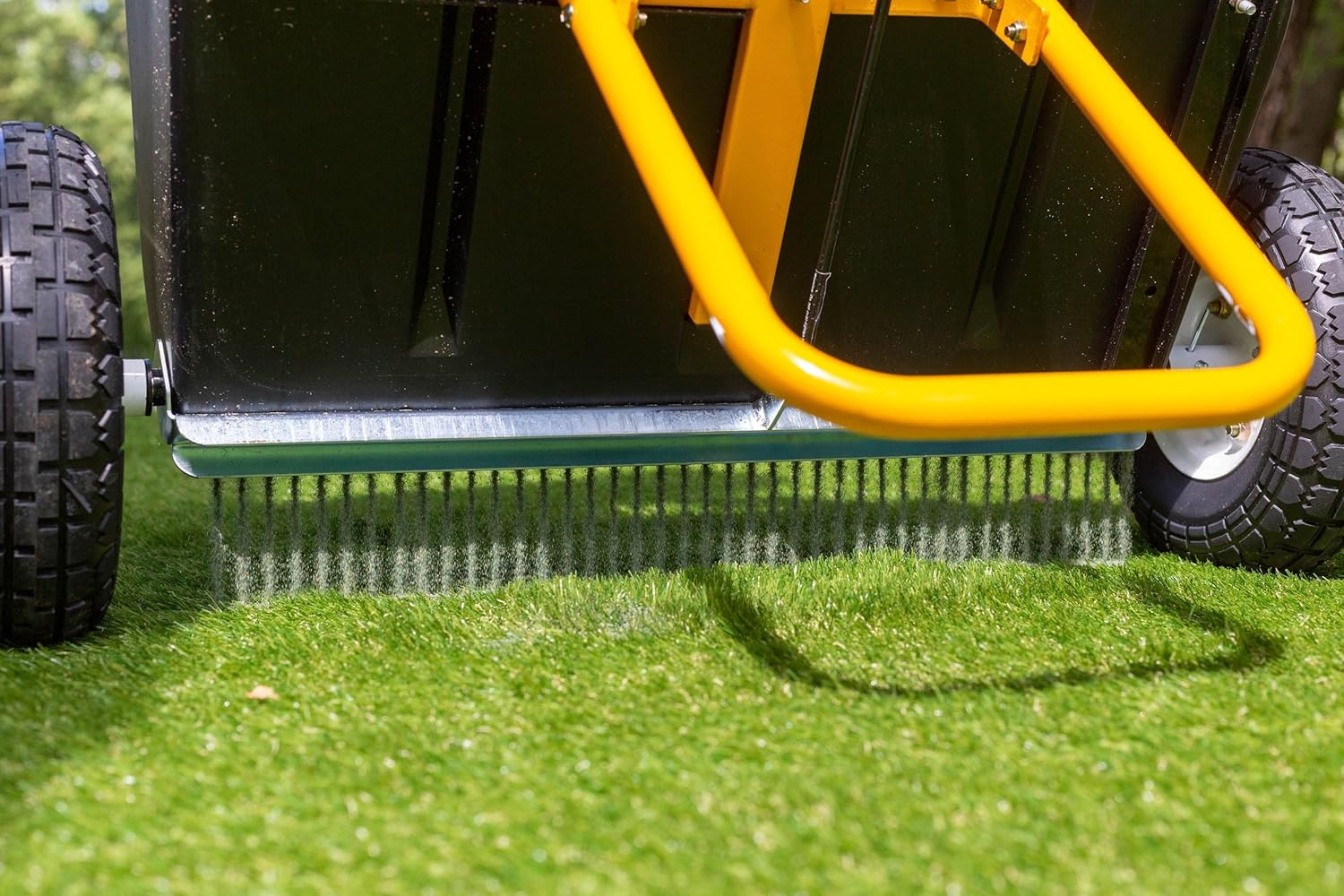Introduction to Artificial Turf for Patios
What is Artificial Turf?
Artificial turf is a synthetic surface made to look like natural grass. Originally used in sports fields, it’s now widely adopted in residential spaces, especially patios. Made from durable fibers like polyethylene, nylon, and polypropylene, it mimics real grass while requiring minimal upkeep.
Why It's Becoming Popular for Patios
In 2025, more homeowners are turning to artificial turf for their patios due to its aesthetic appeal, functionality, and eco-friendliness. It transforms dull outdoor areas into lush, green spaces that look vibrant all year long—without watering, mowing, or reseeding.
Benefits of Artificial Turf for Patios
Low Maintenance Requirements
Say goodbye to mowing, trimming, or fertilizing. Artificial turf saves time and energy, allowing you to enjoy your patio without the constant upkeep.
Water Conservation
With global water shortages, turf offers an eco-conscious alternative. It requires no watering, helping homeowners significantly reduce their utility bills and environmental footprint.
Enhanced Aesthetic Appeal
Artificial grass stays green throughout the year, offering a consistently pristine look. It provides a soft, inviting surface that complements patio furniture, plants, and lighting.
All-Weather Durability
Unlike natural grass, turf stands strong against rain, snow, and direct sunlight. It drains quickly, dries fast, and doesn’t get muddy—making it ideal for patios in all climates.
Types of Artificial Turf Suitable for Patios
Nylon Turf
Highly resilient and ideal for heavy foot traffic. It maintains its shape and color even under extreme temperatures.
Polyethylene Turf
This type feels and looks the most natural. It’s soft underfoot, UV-resistant, and perfect for lounging areas.
Polypropylene Turf
Affordable but less durable. Best used for decorative sections of the patio or areas with limited use.
Installation Process for Patio Artificial Turf
DIY Installation vs. Professional Help
While DIY kits are available, professional installation ensures longevity and proper leveling. DIY is budget-friendly but labor-intensive.
Tools and Materials Needed
- Artificial turf rolls
- Turf adhesive and joining tape
- Turf infill (sand or rubber)
- Utility knife, lawn roller, and brush
Step-by-Step Installation Guide
- Clear the patio surface.
- Apply a weed barrier and base layer.
- Roll out and cut turf to fit.
- Secure seams with adhesive or tape.
- Apply infill and brush fibers upright.
Design Ideas Using Artificial Turf on Patios
Mixing Turf with Pavers
Combine turf with stone pavers for a chic, modern look. This design adds texture and contrast to your patio.
Creating Play Areas
Design safe zones for kids and pets. Turf offers a soft, cushioned surface ideal for playsets and lounging.
Vertical Garden Integration
Pair turf with vertical gardens to enhance greenery. The natural look of turf complements lush walls, creating a backyard oasis.
Cost of Installing Artificial Turf on Patios
Initial Installation Cost
Expect to spend $5 to $20 per square foot, depending on turf type and complexity of installation.
Long-Term Savings
Though upfront costs may be higher, turf eliminates water, fertilizer, and lawn care expenses—saving thousands over time.
Comparing Costs with Natural Grass
Natural grass costs less initially but requires ongoing investment. Turf becomes more cost-effective within 3-5 years.
Maintenance Tips for Patio Turf
Cleaning and Brushing
Sweep or vacuum turf regularly. Brush fibers every few weeks to maintain an upright appearance.
Preventing Mold and Mildew
Ensure proper drainage. Rinse the turf occasionally with a vinegar-water mix to keep it clean and mold-free.
Seasonal Care Tips
Check for weeds at edges, add infill if necessary, and inspect for damage before summer and winter seasons.
Environmental Impact of Using Artificial Turf
Reducing Water Usage
Artificial turf cuts down on thousands of gallons of water annually, promoting sustainable living.
Eco-Friendly Materials
Modern turf includes recyclable components and non-toxic infills that are safe for children and pets.
Recyclability Concerns
Some older turf products aren't recyclable. Choose certified eco-friendly options for a greener choice.
Common Myths About Artificial Turf for Patios
Heat Retention
Newer turf models use cooling technologies. Light-colored infill and shade structures can also reduce surface temperature.
Artificial Look and Feel
High-end turf closely mimics the texture and color of natural grass. Visitors often can’t tell the difference.
Harm to Pets and Kids
Artificial turf is non-toxic and soft, making it safe for children and pets when properly maintained.
Pet and Kid-Friendly Features
Safe Surface for Play
Turf is cushioned and non-abrasive. It minimizes injuries and is gentle on knees and paws.
Easy Waste Cleanup
Pet waste is easy to remove and rinse off. Anti-microbial infill prevents odors and bacteria buildup.
Allergy Reduction
Artificial turf doesn’t produce pollen, offering relief to allergy sufferers during spring and summer.
Weather Resistance and Longevity
Performance in Extreme Weather
Engineered to withstand snow, heat, and heavy rain. It dries quickly and resists flattening.
UV Stability and Fade Resistance
UV-coated fibers resist sun damage, maintaining color and integrity for up to 15 years.
Expected Lifespan
With proper care, patio turf lasts between 10 to 20 years, making it a worthwhile long-term investment.
Combining Furniture with Artificial Turf
Best Patio Furniture for Turf
Choose lightweight, non-metal furniture to avoid indentations. Use rubber or plastic feet to prevent tearing.
Avoiding Turf Damage
Don’t drag heavy items across turf. Install protective pads under furniture legs for added safety.
Design Harmony Tips
Go for natural tones and wood textures to complement turf. Add rugs and cushions for cozy outdoor living.
Where to Buy Quality Patio Turf
Online Retailers
Websites like LITAGrass and Amazon offer a wide variety of turf types with customer reviews.
Local Home Improvement Stores
Lowe’s, Home Depot, and other local stores often carry samples to help you compare textures and shades.
What to Look for in a Supplier
Look for warranties, UV-resistance certifications, and samples. Check for customer support and return policies.



Leave a comment
This site is protected by hCaptcha and the hCaptcha Privacy Policy and Terms of Service apply.